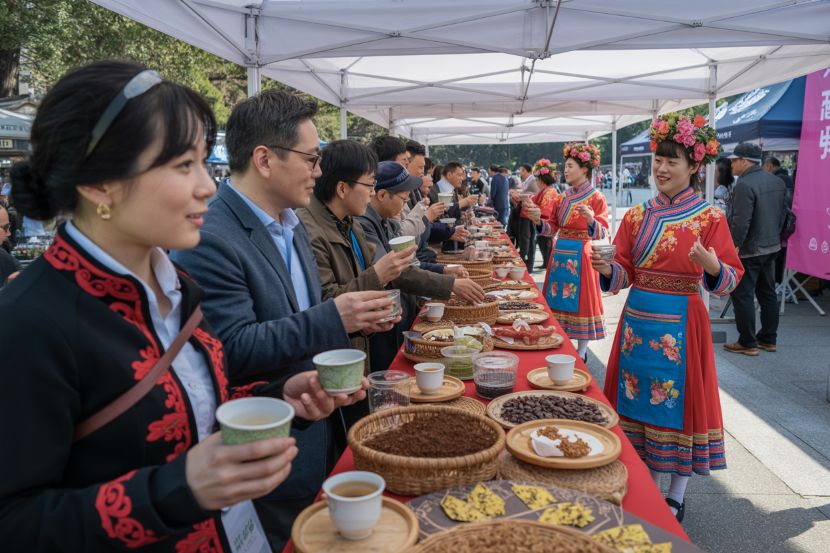How culinary tourism is changing the way people travel

By Alex Caspero | Wealth of Geeks
Food is the number one financial driver among travelers for 2023, with 34% saying they prioritize restaurants and dining. Tourism boards worldwide have taken note, tailoring offerings and itineraries to appeal to this fast-growing demographic of “foodie” travelers.
Whether it’s wine tasting in Napa Valley, visiting Michelin-starred restaurants in Paris, or taking cooking classes in India, food-focused adventures have become a hot trend in the travel industry, according to Booking.com. Culinary tourism, or gastro-tourism, is exploding, a concept where travelers choose their destination based explicitly on its cuisine.
The World Food Travel Association defines food tourism as “Traveling for a taste of place to get a sense of place.” In 2019, the global culinary tourism market was valued at $1.1 billion, projected to grow to more than 1.79 billion by 2027.
Gina Porter of GG Luxury Travel is noticing the uptick in requests. “Most of our clients want some culinary experience, even just dining at a local, authentic restaurant. At least 50% of our clients want a culinary experience such as a cooking class, vineyard visit, or food tour.”
The appeal is clear – culinary tourism allows travelers to experience a destination’s culture through the sensory, artistic medium of food. Even modest excursions, like visiting a local food market, provide an opportunity to appreciate the food or drinks that reflect local culture.
Appeal across generations
“It doesn’t matter who, and it doesn’t matter where, clients love sampling their way through a destination,” says Luxury Travel Advisor Amy Siegal. Everyone can at least appreciate good food and drink, so having the opportunity to experience a different culture’s culinary landscape is prioritized by many.
Food-related travel experiences appeal to various ages, though the trend is toward affluent millennials and baby boomers. “Millenials love food experiences because it’s very big on TikTok and social media,” says Susan Blume of Personal Escape Travel.
Courtnie Nichols of TRvLB agrees. “Millenials and Gen X are leading the way as they are earning more money and have jobs that allow them to have more disposable income.”
Younger travelers seek out food halls, night markets, food tours, and cooking classes to connect with local cultures in an immersive, hands-on way. For Gen Z, in particular, food tourism offers a chance to explore new places through an adventurous yet accessible activity – eating.
Fahd Khan, Director of Marketing & Technology at JetLevel Aviation, sees this trend with younger visitors, “they place a higher value on one-of-a-kind and genuine experiences, especially those related to cuisine.”
Lauren Frye with Art in Voyage reports that from 2022 to 2023, their culinary journey bookings went up by 40%. For 2024, they are seeing more group requests, with an average of 8 guests per booking. Vacations that centered around food and drink, like wine tasting through Tuscany or cheese making in Paris, offer an off-the-beaten-path bonding activity attractive to honeymooners and large family reunions.
France and Italy lead the way
Italy and France have long been at the forefront of gastronomy, boasting some of the world’s most iconic cuisines, wines, and Michelin-starred restaurants. Both countries offer immersive culinary experiences rooted in tradition and local terrain, from fresh pasta in Tuscany to wine tastings in Bordeaux.
Frye notes that Italy is their number one booking destination, with France as a close second. Tuscany, Piedmont, and Umbria are the most requested regions, especially for families looking to get more value for their money. She notes that those requesting France seek more gastronomic and sophisticated experiences.
While cooking classes and walking tours are accessible to most travelers, boutique experiences drive the uptick in foodie travel. “We have noticed a demand for more specific and singular experiences, with olive oil tastings being a prime example,” says Harvey Downward, the Head of Cycling at Cycling for Softies.
“Travelers are in search of experiences that really help them get to grips with the components of cuisine in a particular destination, helping them build their food knowledge from the ground up and create a more developed picture of a location’s culinary scene.”
Southeast Asia
Singapore’s bustling hawker markets are a popular attraction for foodies seeking an authentic taste of South Asian cuisine and culture. Housing dozens of food stalls under one roof, hawker centers serve a mouthwatering diversity of regional dishes like Hainanese chicken rice, laksa, chili crab, and more.
Luke Charny of A Chef’s Tours says that tourists in Bangkok “want to stay clear of pad Thai and green curry and focus on the more unusual dishes that they haven’t heard of before.” Their company also reports a surge in demand for these food tours. “We’re now taking over 250% more guests than we were at our peak, pre-Covid.”
Japan
Japanese cuisine, emphasizing fresh ingredients, delicate flavors, and artful presentation, offers a culinary experience unlike any other. From sushi and sashimi to tempura, ramen, and yakitori, the variety of dishes and specialties throughout Japan is vast.
Japan has more Michelin-star restaurants than any other country in the world. Cities like Tokyo, Kyoto, and Osaka are home to hundreds of restaurants on the prestigious Michelin Guide, making Japan a mecca for foodie travelers.
link





